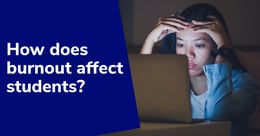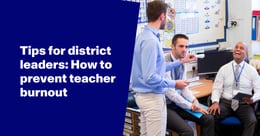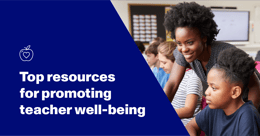
Note to District Leaders: Here Is What Effective PD Looks Like
This spring, millions of teachers who had never taught online were suddenly moved en masse into an emergency remote learning model.
While professional development (PD) has already been a central focus for district administrators, the upcoming fall semester provides an opportunity to further address training gaps for teachers during this extraordinarily taxing moment in their professional history.
Jake Miller, a technology integration specialist, educator, speaker, and host of the Educational Duct Tape Podcast, lent his expertise to the PAPER team about what he believes PD for teachers should look like.
The optimal way for a teacher to learn about what works in a classroom, he explained, is to try to avoid having a school or district administrator dictate the PD to teachers.
It happens a lot in teaching where the principal or the superintendent says, ‘this is the tech tool we’re going to learn about, this is the strategy we’re going to learn about, this is how we’re going to do things in the classroom.’
He compared this to how we, as adults, don’t remember much of what we learned in class as young students because we didn’t choose the topics that were taught to us, nor were we inspired or motivated to learn about them — because we didn’t “buy into it”, they didn’t really “stick” for us.
That’s what happens with teachers too. If they aren’t the ones picking the topic and they don’t see the value in it, they’re not truly, deeply going to get into it.
Autonomy, Mastery, Purpose
Jake referred to the work of the author Daniel Pink, who examines the three elements of true motivation — autonomy, mastery, and purpose — to explain how we should approach PD.
The best thing we can do for educators, said Jake, is:
• Give them some autonomy over what they are learning about by letting them choose what they and their students need.
• Give them the chance to work towards mastery by letting them continuously practice to get better at certain things.
• Let them identify their purpose, as in why they want to do these things. “And educators have all the purpose in the world, right? They’re trying to benefit their students,” said Jake.
When PD comes from that angle, Jake contends that teachers are more likely to be motivated and feel inspired to learn it deeply, and the effectiveness of the PD is likely to be high.
Administrators should act like the “ideal teacher”
When you think of the “ideal teacher”, explained Jake, you think of a teacher that makes you feel inspired to learn new things and safe to try new things that praises you and celebrates you when you accomplish things, and that doesn’t push certain content on you. Jake believes that administrators who tap into these “ideal teacher” characteristics will find that their teachers are more empowered and motivated about PD than ever before.
The teachers that we like are also ones who strike a balance between what they need to teach and what their students are interested in learning about.
For example, explained Jake, if a student isn’t particularly interested in photosynthesis, they won’t want to learn about it. However, that student will understand that they need to, especially if their teacher also gives them the opportunity to learn about things that excite them.
This also applies to teacher PD; if teachers are empowered to decide what to learn about, they are more likely to accept when PD is assigned to them.
When PD has to be dictated
Teachers are often given professional development without being sold on it,” said Jake. “When professional development has to be something determined from above the teachers, they need to understand the why.
If a teacher is told they have to learn how to use Google Meet, explained Jake, they are likely going to be compelled to learn it if told why doing this is beneficial to them and their students; for example, making connections with students, seeing their faces, and building a classroom community during remote learning.
Going back to the “ideal teacher” concept, Jake explained that good teachers use hooks in the classroom to hook the students’ attention and compel them to want to learn. He used the example of students wanting to learn about decimals after their teacher relates the concept to money.
With fall right around the corner, Jake contends that the first step administrators should take with their teachers is to give them the power to identify what they need and what steps they’re going to take, “and then for the districts, schools, or coaches to facilitate that happening, but let teachers be in the driver’s seat.”
The 2020-2021 school year will be different
District leaders are currently making difficult decisions for their communities, as well as ensuring that their teachers are still empowered in their roles.
Educators are navigating a very new professional reality, and they need training and support to make sure that they get this right for their students.
About Jake Miller
Jake Miller is an edtech and learning enthusiast who hosts the Educational Duct Tape podcast and shares #EduGIFs at @JakeMillerTech and on JakeMiller.net. He works as a science teacher in Ohio and previously spent five years as a technology integration specialist and an additional 12 years in the classroom teaching math, science & STEM at various grade levels. Jake’s favorite job, however, is his full-time position as a husband and father.






